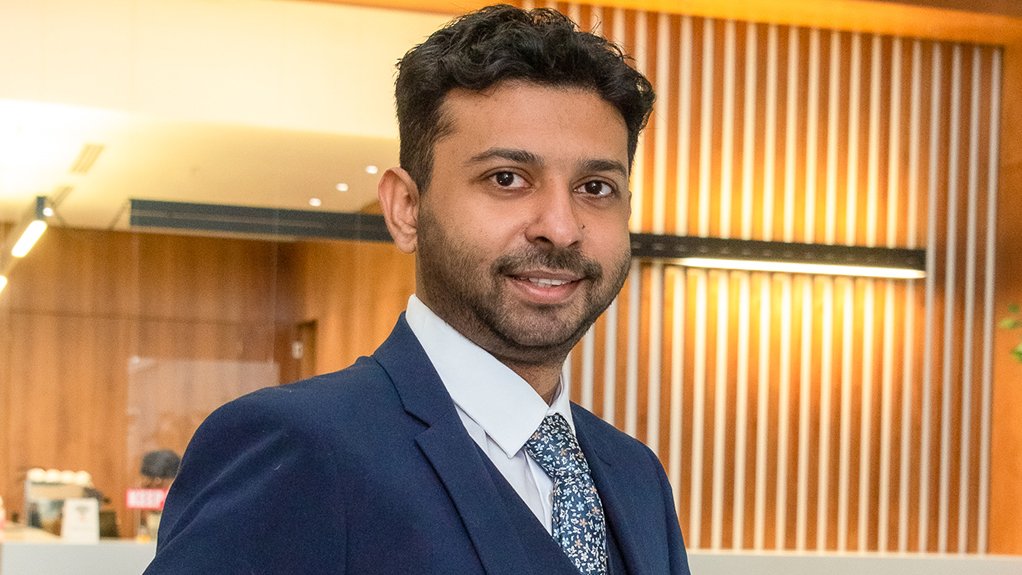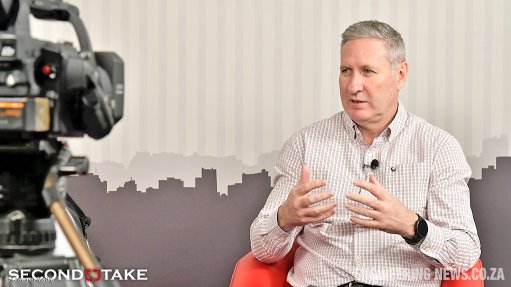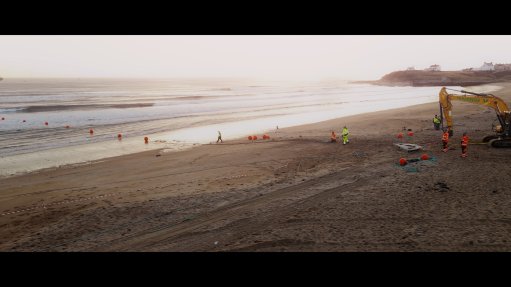Will grid, logistics and construction constraints stymie urgent wind energy ramp-up?
In light of ongoing grid constraints, some wind industry practitioners are warning that only about 2 GW of the 3.2 GW wind allocation in Bid Window Six (BW6) of the Renewable Energy Independent Power Producer Procurement Programme (REIPPPP) is likely to be taken up, given that lower-priced solar photovoltaic projects could absorb a portion of the remaining available network in the key wind provinces of the Eastern and Western Cape. There are also warnings that South Africa’s logistics and construction sectors are not in a position to cope with the anticipated acceleration of wind-related project activity, which is increasingly likely to be driven by private-sector projects rather than the REIPPPP. Any further delays on the back of a protracted period of procurement disruption between 2015 and 2021 and difficulties in ensuring that projects procured under BW5 reach financial close will contribute to extending loadshedding, which has already intensified dramatically this year. Engineering News Editor Terence Creamer raised these concerns with South African Wind Energy Association (SAWEA) CEO Niveshen Govender, whose responses are outlined below.
Engineering News: Do you believe there is a risk that the full 3.2 GW allocated to wind as part of BW6 might not be taken up?
Govender: The wind industry has typically exceeded the allocation in terms of what has been submitted and constraints are usually related to grid capacity. Areas of high levels of wind resource are the most constrained. The allocation for the REIPPPP can only be taken up if there are sufficient bids which meet the Department of Mineral Resources and Energy (DMRE) and IPP Office guidelines at a competitive cost. We have seen that there are more bids, with a combined capacity of about 4.2 GW, than the allocation for BW6, which is 3.2 GW. Where there is available capacity, the best suited technologies for the country must be evaluated whilst considering maintaining the integrity of the programme.
Given that price is the key evaluation criteria and PV projects could come in cheaper than wind during BW6, is there a risk that grid capacity in areas of strong wind resources will be diverted to PV, which only has a 1 GW allocation?
The evaluation process allows for both wind and PV projects to be evaluated equally based on price and grid-connection availability, hence the most cost-effective projects will use up the initial grid capacity in a specific region. Once the allocation for one technology is used up (e.g. PV since it has a lower allocation as part of BW6), the remaining allocation for the bid round falls to the other technology whilst ensuring that the specific allocation for that technology is not exceeded. Although PV may allow for lower tariffs in certain instances, considerations need to be made as to the holistic set of factors required of a power generation facility, including the availability factor – with new wind energy projects reaching approximately 50%, that needs to be taken into consideration. It is within the purview of the government and system operator to lay out the requirements for a technology to meet the demand. As SAWEA, we advocate that the government and system operator consider these additional factors given the struggles the State utility is undergoing.
Is there anything that can be done to safeguard grid capacity for wind projects during BW6?
Grid capacity is one of the main constraints to the expansion of wind energy projects and renewable energy projects at large in South Africa. Preferred bidders are chosen by the IPP Office and DMRE through a rigorous closed-door evaluation process hence wind projects must comply with requirements as set out in the BW6 request for proposals (RFP) in order to ensure they are chosen as preferred bidders. Although as an industry we can see the advantages of safeguarding grid capacity for wind-specific projects, we must ensure that the integrity of the REIPPPP is not compromised.
Has the industry engaged with the DMRE and the IPP Office on ways to ensure that the full wind allocation is taken up?
Industry has engaged with the DMRE and the IPPO through SAWEA as well as through the RFP clarification process. Renewable-energy technologies must be fit for purpose, and it may make better economic sense to prioritise projects that provide technical capabilities required by the system operator (such as a higher availability factor), or improved recyclable components at end of life whilst also providing the energy at a competitive price. This needs to be done within the confines of the programme and due process needs to be followed. Ultimately, the allocation relies on the private market submitting good quality bids, which conform to the conditions of the RFP as well as having a competitive price and the grid having adequate capacity in the proposed project region.
Why was the wind oversubscription so low for BW6?
Every bid window round has been oversubscribed with wind projects, including BW6. The energy landscape is changing and for the first time, South Africa is open to a liberalised energy market with other options of energy production where government is no longer the sole offtaker. Due to the removal of the 100 MW distributed generation cap, many projects, which may have been initially earmarked for the REIPPPP have been reallocated to private offtakers.
What is this likely to mean for tariffs?
Tariffs have historically been dropping from BW1 to BW5, however, due to the challenges that the Covid-19 pandemic introduced, many projects encountered numerous issues in order to ensure that the projects remained viable in order to meet financial close. For future bid rounds, it is likely that bidders will include factors to account for financial risk thus tariffs may increase.
In your assessment, is there greater demand from the REIPPPP or the corporate PPA market currently for wind?
We are currently seeing equal demand from private and public procurement mechanisms. However, due to shifting market conditions we may see a different future where the private market may well overtake public energy generation procurement in the future. Evidence of this is the spike of interest from private offtakers for IPPs following the President’s July 2022 announcement of the lifting of the distributed generation licence cap.
Could you offer a five-year view as to how much wind capacity should be added in both market segments?
The Integrated Resource Plan (IRP2019) envisages 17.7 GW of wind power which will be contributed to the grid. However, it is widely known that this figure may change due to the changing market and political conditions which were in place at the time of the drawing up of the current IRP. We are also expecting large growth in the private offtake market and an increasing green hydrogen market. Given the loadshedding crisis and blackouts, it is evident that the planned allocation from new generation capacity is not sufficient. Plans put together by the Presidential Climate Commission of between 5 GW and 7 GW coming online annually is three to five times the requirement in IRP2019. This illustrates that the IRP must be updated to reflect the new realities and to account for the new private generation market.
How do you expect the market balance to shift over the coming years?
Due to various market conditions and challenges, IPPs are shifting towards developing projects to serve private offtakers. This trend seems to be the path of choice. The private offtake market is attractive due to the lower barrier to entry for private producers since the regulatory environment is a lot less rigorous and private offtakers will not be constrained by the current challenges of the existing grid infrastructure. Market conditions are increasingly forcing generation for own use instead of generation to be added to the grid.
Does the domestic wind industry and the associated supplier community have the capacity currently to meet the demands of both market segments simultaneously?
Global wind energy installations have increased by 10% to 12% annually for the past decade and there have not been significant supply chain challenges in the South African market apart from the international factors such as the pandemic and the Russo-Ukraine war. South African wind energy projects have typically been delivered on time. So, we can say with some level of certainty that we do not envisage serious challenges with meeting this demand but rather view this as an opportunity for the industry’s growth.
Does South Africa have the logistics infrastructure in place to ensure that wind projects are delivered on time? What are the areas of possible constraint?
Wind projects have typically been delivered on time in South Africa and are usually built within 24 months. Given the challenges brought on by the Covid-19 pandemic and the Russo-Ukraine war, it is still unclear as to the full impact of these events on the ability to achieve completion since several BW5 projects have only just reached financial close. Historical areas of constraint have been approval times from various government departments for transport permit applications, general shipping delays, processing times through ports as well as labour unrest at port terminals. Timelines from financial close to commercial operation are typically agreed upon before signing of the power purchase agreement, hence the project developer will aim to ensure that these timelines are achievable in order to avoid financial penalties.
Does the local logistics industry have the trailers needed to transport the latest blades?
There is an opportunity to develop and grow the local logistics industry to meet the demand. We are currently identifying the various gaps and will work as an industry to respond appropriately.
Is there sufficient traffic policing capacity to oversee all the abnormal loads?
Industry has had positive engagements with local and provincial departments with regards to obtaining the necessary transport permits in a timeous manner. Transportation of these abnormal loads must be done once a permit is acquired from the traffic department, then the local policing departments can plan their deployment of officers on the stated route. The transportation is usually undertaken on rural roads outside of peak times hence traffic is minimised. While there is room for improvement, we do not envisage traffic policing as a major constraint in order to deliver wind projects.
Do South African ports have sufficient handling and storage capacity for the wind inputs that will have to be imported?
The main transit ports into South Africa have dealt well with the current and previous bid window demands, however, processing times through ports can be slow and equipment at the ports may need to be upgraded. Should Transnet shore up its capacity at the main port terminals, there should be sufficient capacity. One of the methods of improving the handling and storage capacity are special economic zones (SEZs) where specialist cargo is offloaded and can be catered to a specific sector. The Saldanha SEZ is an example of this as it is dedicated to serving the energy and maritime sectors hence large pieces of equipment (including turbine blades) are easily handled. Transnet has announced that R44-billion will be invested over the next five years into its two port divisions through the deepening of channels, expanding container capacities, extending breakwaters and procuring new crane equipment amongst other interventions. This will improve the capability and processing efficiency of its Durban, Mossel Bay, Saldanha and Cape Town ports.
Does South Africa have the contracting capacity – across the construction industry – to cope with the anticipated scale-up in wind deployments?
The pandemic has dealt a blow to many sectors including construction, with many leading construction companies having closed down. Most industries have begun to bounce back and it appears that the appetite for further renewable energy uptake has increased. With further developments in the pipeline for private offtakers, it is expected that existing companies will increase capacity and new companies will likely be formed in order to deal with the scale up in deployments.
Do the original equipment manufacturers (OEMs), some of which having reported commercial pressure, have the capacity to supply South Africa’s emerging demand?
South Africa is still a fledgling market for wind energy when compared to mature markets such as the US, the UK, Germany and the Scandinavian nations where OEMs have been supplying into these markets for decades. OEMs are supplying to regions across the world and hence will be able to scale up supply provided they are able to overcome the aforementioned supply chain challenges. OEMs have established global supply chains and thus have ability to scale up based on demand.
Given the pressures the OEMs are under, is the localisation opportunity even more limited, or will these pressures assist in unlocking localisation?
Policy certainty and procurement consistency is key to unlocking localisation. The increased appetite for wind energy improves the case for localisation when considering the global supply chain issues. Localisation of certain components can be increased once there is a clear regulatory framework in place for public and private procurement. Collaboration between the OEMs and governmental departments will be key to ensure the long-term success of any locally manufactured component.
Which are the greatest-potential localisation opportunities, and what level of volumes, and over what period, are required to support domestic manufacture?
The South African Renewable Energy Masterplan (SAREM) is in the process of being drawn up in consultation with government and industry. SAREM will provide guidance on where the opportunities lie for localisation and thus is the initiative of choice that will determine these volumes. SAWEA advocates for increasing local manufacturing, however, this must be achieved responsibly and sustainably. The market should be given a level of flexibility and predictability that allows industry to decide which components make the best business sense for local manufacture.
Where are the main areas of supply-chain stress at the moment?
There are several areas of stress on the supply chain including cost inflation for raw material, increased logistics costs and shipping delays. Members of the wind industry are actively engaged in formulating a plan to overcome these challenges. We are identifying the supply chain stresses and will work diligently to put together a plan to navigate these challenges.
Is there a risk, in the wind sector, that much needed new capacity will be delayed as a result of external and internal bottlenecks?
The supply chain crisis is ongoing hence current financial costs are unlikely to drop soon. The grid remains the key bottleneck for public procurement, however, it will also introduce challenges for private sector power procurement when viewed through the lens of Eskom’s wheeling policy. The Presidency’s directive to government departments to treat the IPP projects as key projects will assist greatly in fast-tracking new generation to come online within the shortest timeframe, but collaboration between governmental departments will be key to ensuring the success of this initiative.
What needs to be done to prepare for the coming intense period for the wind sector?
In order to prepare for the upcoming extended period of wind energy procurement, the wind industry will need to ramp up skills training as well as entice new entrants into the industry. Logistics and manufacturing capabilities can be ramped up to match the demand. Presidential announcements need to be followed by updated regulations and frameworks in order to achieve these new targets. Eskom will need to urgently invest in strengthening and expanding the grid (using both local and international funding sources) as well as updating the Generation Connection Capacity Assessment in order to prepare industry for the available grid capacity. The private sector will need to assist Eskom by contributing towards strengthening and expanding the grid in order to make many of these projects viable.
Article Enquiry
Email Article
Save Article
Feedback
To advertise email advertising@creamermedia.co.za or click here
Comments
Press Office
Announcements
What's On
Subscribe to improve your user experience...
Option 1 (equivalent of R125 a month):
Receive a weekly copy of Creamer Media's Engineering News & Mining Weekly magazine
(print copy for those in South Africa and e-magazine for those outside of South Africa)
Receive daily email newsletters
Access to full search results
Access archive of magazine back copies
Access to Projects in Progress
Access to ONE Research Report of your choice in PDF format
Option 2 (equivalent of R375 a month):
All benefits from Option 1
PLUS
Access to Creamer Media's Research Channel Africa for ALL Research Reports, in PDF format, on various industrial and mining sectors
including Electricity; Water; Energy Transition; Hydrogen; Roads, Rail and Ports; Coal; Gold; Platinum; Battery Metals; etc.
Already a subscriber?
Forgotten your password?
Receive weekly copy of Creamer Media's Engineering News & Mining Weekly magazine (print copy for those in South Africa and e-magazine for those outside of South Africa)
➕
Recieve daily email newsletters
➕
Access to full search results
➕
Access archive of magazine back copies
➕
Access to Projects in Progress
➕
Access to ONE Research Report of your choice in PDF format
RESEARCH CHANNEL AFRICA
R4500 (equivalent of R375 a month)
SUBSCRIBEAll benefits from Option 1
➕
Access to Creamer Media's Research Channel Africa for ALL Research Reports on various industrial and mining sectors, in PDF format, including on:
Electricity
➕
Water
➕
Energy Transition
➕
Hydrogen
➕
Roads, Rail and Ports
➕
Coal
➕
Gold
➕
Platinum
➕
Battery Metals
➕
etc.
Receive all benefits from Option 1 or Option 2 delivered to numerous people at your company
➕
Multiple User names and Passwords for simultaneous log-ins
➕
Intranet integration access to all in your organisation


















